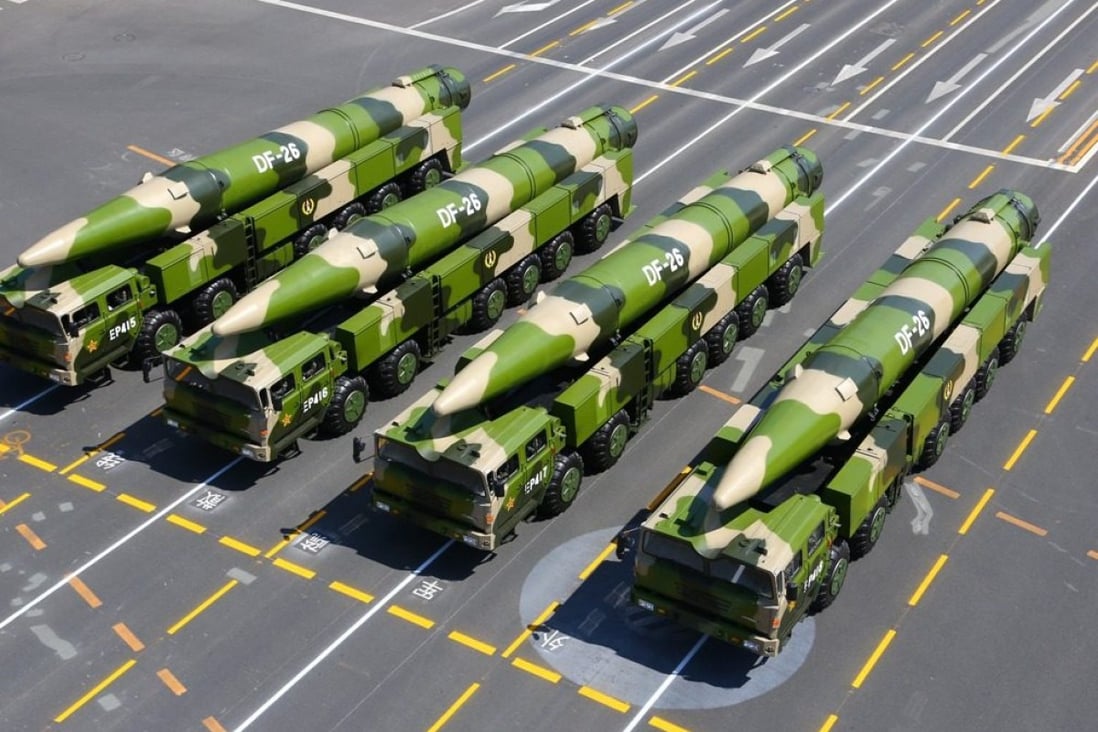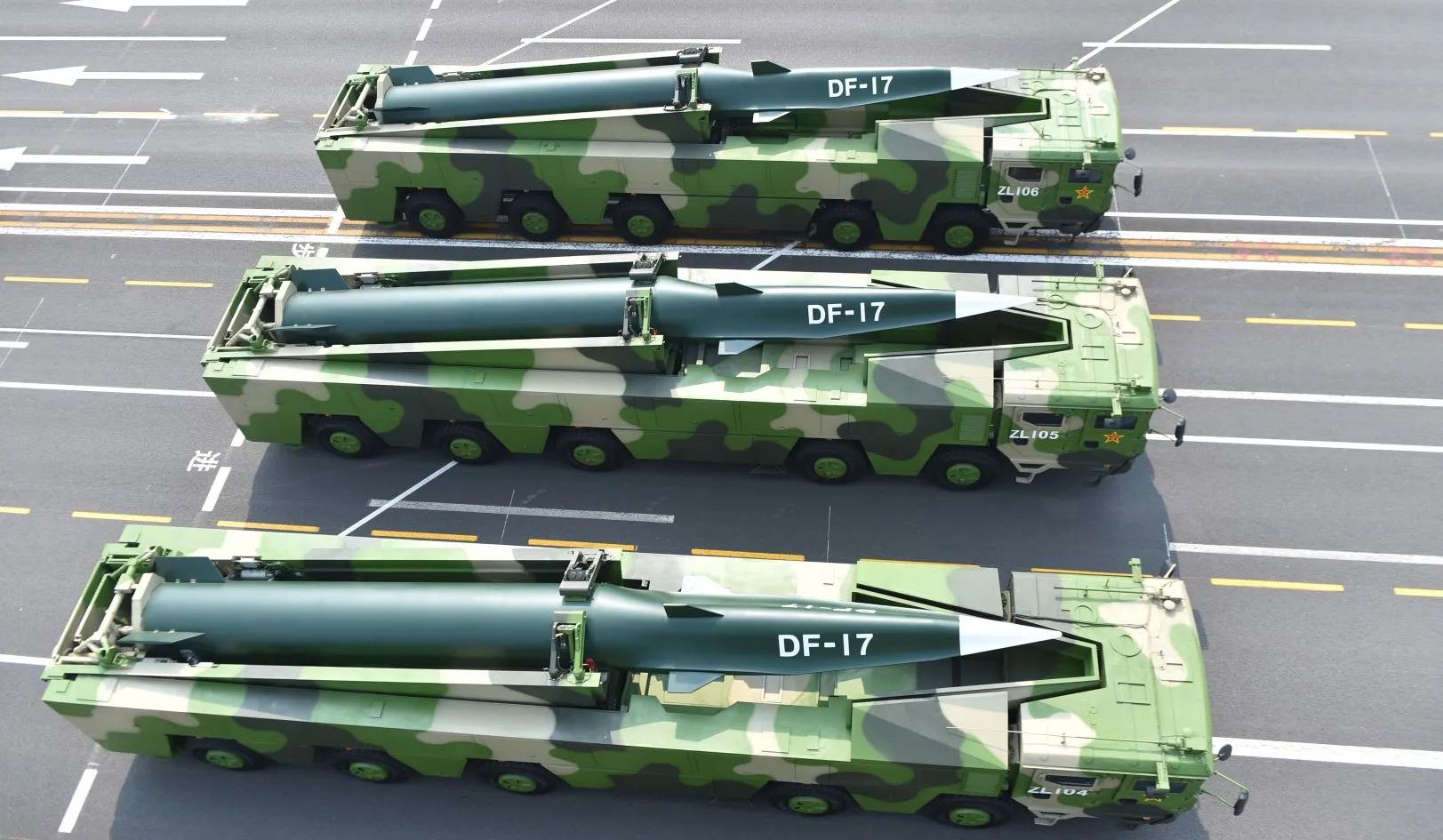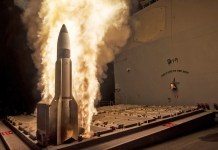At a time when the US is still months away from fielding its first hypersonic missile, the Pentagon has identified China’s DF-17 hypersonic ballistic missile as a significant threat to US Pacific bases.
Chinese ‘Espionage’ Of US Military Technology Could Receive A Serious Jolt As Republicans Take Charge Of House Of Representatives
According to the recent Pentagon report on China’s Military Power, China’s Dong Feng-17 (DF-17) hypersonic glide vehicle (HGV)-powered medium-range ballistic missile (MRBM) is intended to attack foreign military installations and fleets in the Western Pacific.
The report released on November 29 described China as the “most consequential and systemic challenge to our national security and a free and open international system.”
It stated in no ambiguous terms that PLA’s missile force was transforming, thanks to the DF-17 hypersonic missile.
“The DF-17 passed several tests successfully and is deployed operationally. While the DF-17 is primarily a conventional platform, it may be equipped with nuclear warheads,” the Pentagon said. Citing a claim by a Chinese military expert, the Pentagon added that the “primary purpose of the DF-17” is striking bases and fleets in the Western Pacific.
The system, deployed in 2020, may replace some outdated short-range ballistic missile (SRBM) systems, the DoD continued, citing Chinese media. This aligns with Chinese analysts’ assertions that the missile could strike US Pacific bases with its high speed and camouflage.
According to previous reports, the DF-17 can penetrate regional US missile defenses. It may go from China to US military stations in Yokosuka, Japan, and South Korea within a maximum range of 2,500 kilometers (1,550 miles).
The hypersonic missile made headlines when it debuted in October 2019 at a military parade marking the 70th anniversary of Communist Party rule in China. Later, in 2021, the PLA conducted its first known hypersonic test involving the DF-17 Glide vehicle in the spring of 2021, which rattled the United States.
“The DF-17 passed several tests successfully and is deployed operationally. While the DF-17 is primarily a conventional platform, it may be equipped with nuclear warheads,” stated the Pentagon’s 2021 China report.
According to reports, the DF-17 could deliver both conventional and nuclear payloads, further endangering US territories and bases in the Pacific in case of a conflict.

The US has earlier acknowledged China’s growing missile capability. For instance, the Pentagon has shifted attention to strengthening Guam’s missile defense to shield it from China’s long-range missile DF-26, which has the range to strike the critical Andersen Air Base.
It is pertinent to note that it could be extremely hard or nearly impossible to defend against a missile flying at hypersonic speeds within the Pacific. The commanders in the region would have little to no time to follow an incoming hypersonic attack and attempt to intercept or fire a counterattack.
Even though US Patriot and THAAD batteries protect the region, they are not equipped to defend against an incoming hypersonic projectile that travels at five times the speed of sound and follows unpredictable trajectories. The US is working on hypersonic defense, but the project is still in the works.
China’s DF-17 Hypersonic Missile
The DF-17 is a medium-range ballistic missile mounted on a DF-ZF hypersonic glide vehicle. The missile can be launched from a mobile transport-erector launcher and has a range of up to 2,500 kilometers. The DF-17 can be fired from a regular rocket booster as an HGV system.

After rising to almost exo-atmospheric altitudes, the missile separates and uses a hypersonic glide vehicle to find its target. Due to its high speed, low trajectory, and mid-flight flexibility, the HGV can successfully penetrate sophisticated opponent defenses in circumstances where more conventional systems would likely fail.
Earlier, a report in the Global Times said that “US air defense systems including THAAD, SM-3 and Patriot missiles deployed in South Korea, Japan, the island of Taiwan and on US warships will not work against the DF-17.”
Earlier this year, China released a video of what appeared to be a DF-17 missile launch for the first time just before the Chinese People’s Liberation Army’s (PLA) 95th founding anniversary, as reported in detail by EurAsian Times.
First DF-17 launch video. DF-17 is a medium-range missile system equipped with a hypersonic glide vehicle.(speed: Mach 5-10; range:1,800-2,500 km) pic.twitter.com/yUEnkiVEbj
— 彩云香江 (@louischeung_hk) July 31, 2022
Chinese military analyst Song Zhongping made another disclosure in addition to the DF-17 hypersonic missiles’ already well-known formidable capabilities. He mentioned aircraft ships as targets that the DF-17 might also be able to attack while traveling slowly. There hasn’t been much information regarding a DF-17’s capacity to attack carriers precisely.
In addition, even though the DF-17 is a ground-launched missile, some reports indicate that an air-launched variant might be developed for use by the Xian H-6N bomber, the most recent model of the H-6 family of bombers.
With a range of 10,000–11,000 kilometers equipped with the DF-17, the H-6N can reach the most critical enemy installations over the entire Indo-Pacific.
Meanwhile, China has bashed the Pentagon’s report. However, the concerns in the United States about Chinese hypersonic missiles may not be misplaced as it lacks operational hypersonic missiles to act as a deterrent.
- Contact the author at sakshi.tiwari9555 (at) gmail.com
- Follow EurAsian Times on Google News





